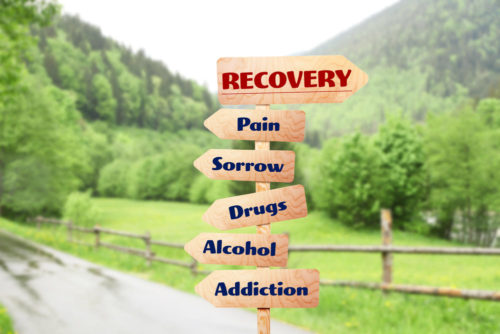Harm Reduction–What You Need to Know
Harm Reduction–What You Need to Know
Overdose Deaths Continue to Climb
A recent New York Times article highlighted the work of an organization in New York City about some of the benefits, as well as some of the horrors of the harm reduction movement. The vast majority of harm reduction proponents are passionate about their work, and compassionate towards individuals with substance use disorders. People with addiction need help, and it’s clear that much of what we are doing is not working given that the rate of overdose deaths continues to climb at epic, national public health emergency proportions.

The Federal Government has developed a dashboard: Opioid Overdose Tracker – NEMSIS to make the public aware of the number of non-fatal overdoses–lives saved by emergency medical services (EMS) personnel. Saving lives is a good thing. But what does the future look like for the individual whose life has been saved from overdose? We know that tens of thousands of lives have been saved due to the administration of Naloxone, otherwise known as Narcan. According to NEMSIS, EMS is on track to respond to over 150,000 overdoses this year.
Further, there has recently been a loosening of regulations around the use of both Narcan and Suboxone, a medication designed to be of service to the substance use disorder population, making both more widely available. Harm reduction proponents also want to see more widespread access to safe injection sites, Fentanyl test strips, and many are making a push to see Methadone become available without the current stringent regulations, allowing individuals to receive this opiate medication through their own doctors by prescription.
But there are many challenges associated with these harm reduction movements that aren’t getting attention, and still more issues and risks about which we don’t yet know the severity from the proliferation of harm reduction methods. For example, as we are developing data on the EMS side about overdose reversals, we do not have a great way of accounting for overdose saves and/or deaths from overdose that utilize Narcan from at home or non-EMS personnel.
We know that Narcan is saving thousands of lives, but there are numerous studies across the country that indicate that 10% or more of those saved by a Narcan reversal are dead within a year. Of those people who die within a year, many die within the first month of an overdose reversal. For example, See: https://www.health.harvard.edu/blog/naloxone-tool-not-solution-opioid-crisis-2017113012800
New, Stronger Opioids Are Cause for Concern
What we don’t know is how many people are actually being connected to treatment or support following an overdose. According to NEMSIS data, some 20% of persons saved by Narcan don’t even access emergency rooms for follow up care. When it comes to the use of Narcan, there is debate about increasing the doses to respond to the latest trends in drug use and the drug supply.
Here’s some information to help you understand the escalation of the strength of illicit drugs that are causing most of the overdoses.
- Heroin is approximately 3 times more powerful than Morphine
- Methadone is also approximately 3 times more powerful than Morphine, but as a medication, its euphoric effects are slower and more predictable.
- Buprenorphine or Suboxone may be up to 40 times more powerful than Morphine. Like Methadone this medication, when used appropriately, provides a more predictable euphoric effect, and can reduce the risks of overdose.
- Fentanyl is up to 50 times more powerful than heroin
- A family of drugs in the family of Nitazene’s which is entering our illicit drug supply can be up to 40 times more potent than Fentanyl
- Carfentanyl is up to 100 times more powerful than Fentanyl and up to 1,000 times more potent than Morphine
- Xylazine- is a powerful animal analgesic that is prolonging the effect of Fentanyl and is unresponsive to Narcan.
The debate around increasing Narcan dosing centers around an attempt to meet the needs of individuals that are using street/internet drugs tainted with Fentanyl and other powerful opiates. However, giving too much Narcan can cause a host of problems, most notably placing the individual in precipitous withdrawal, and leaving the user wanting to use more drugs immediately to counteract the effects of Narcan. While we are in favor of saving lives, we have no way to figure out what dose of Narcan is required, and in some instances whether Narcan will even work.

Managing Addiction with MAT is Not Enough
Now let’s take a look at the options for medication assisted therapies. First let’s unpack the roadmap that has been handed to substance use disorder professionals. It begins with the introduction of a medication to be used in conjunction with treatment, therapy and support for the best outcomes. When compliance with the supportive therapies are low, or there is relapse, we now find governmental agencies and harm reduction proponents saying to medicate without the use of the therapies in order to prevent overdose. This approach completely ignores the reasons why people are using these substances, and provides little to no guidance on how to live fulfilling lives. Substance use disorders have a meaning and purpose. In treatment circles, we have evolved to understand that many if not most of those suffering from substance use disorders do so as a response to trauma and/or co-occurring mental health disorders. To eliminate the essential counseling/therapy element of treatment and support prevents the individual from overcoming addiction. Simply managing addiction through medication is an additional risk factor for future overdose because we are not developing in people the necessary coping skills to improve self esteem, and to develop safety anchors to reduce urges, cravings and temptations in the face of stressful situations.
When we look at Methadone, and Methadone treatment programs we see a large number of people who continue to use other substances. We bear witness to sheep in the lion’s den as those struggling and going to Methadone clinics are sitting ducks for drug dealers who know exactly where to find their clientele. A lesson learned from Methadone treatment, is that medication alone without the assistance of some form of therapeutic support does not resolve the substance use problem.
I was surprised to learn while doing research for this blog that Suboxone is up to 40 times more powerful than Morphine. Studies have shown that (conservatively I’d argue) 25% of individuals using Suboxone are misusing the medication. By misuse, we are talking about people who are either using it in forms that boost its euphoric effects, like crushing and sniffing it, or more likely selling their prescriptions in order to purchase heroin. In such cases, insurance companies or Medicaid are actually funding addiction.
There is a medication called Naltrexone or Vivitrol in an injectable form, that blocks opiate receptors preventing an individual from getting high. It provides no euphoric effect, therefore it has no street value. The catch is that someone actually has to be abstinent for a period of time before getting on this medication, and a person has to commit to either being abstinent for several days or actually be in a treatment program in order to receive this medication. We don’t hear much from the harm reduction folks on this medication, because at its core, harm reduction accepts the individual where they are at, and understands with compassion that many substance users don’t want to give up their drugs.
We Should Not Underestimate the Capacity to Change
This compassion on the harm reduction side often assumes that professionals invested in helping people get sober lack compassion and understanding. Many believe that sobriety is passé, 12-step programs are outdated, that the drugs that are out there today are too powerful, and we cannot expect to get people who are addicted to these substances to commit to discontinue use. But what are we offering in return?

The maintenance of individuals on powerful drugs may rob them of the opportunity to experience the benefits of sobriety. Almost daily I am on an online platform where someone is celebrating months or years of sobriety. What about this population? Why is it possible for them and not for others? The truth is that sobriety is open and available to anyone who wants it.
The New York Times article referenced above tells the story of a pregnant female, who continues to use and live on the streets. She is offered the opportunity to get warm, to eat and to be clothed. She is even gently asked to consider the life of her unborn child. Oh the suffering we endure in our compassion. The Times article goes on to describe the crime and the needles found at a safe injection site, and while overdoses are often thwarted (sometimes not), the community suffers as parents don’t want their children walking around the site which is across the street from an elementary school. There are many unknowns associated with harm reduction beyond saving lives yielding far too often a lifestyle of existence rather than a life that can flourish.
Harm reduction proponents are eager to get Fentanyl test strips in the hands of substance users. Just as logic might tell us that a pregnant mother would readily accept help for the sake of her unborn child, it seems that those in favor of harm reduction would assume that someone in active addiction would take the time to wait a few minutes for the results of a Fentanyl test strip to see if their drugs are tainted or poisoned. A recent article highlighted the case of a woman who had Fentanyl test strips in her pocket, but she wasn’t interested in waiting to see the results when all she wanted to do was get high. So in our harm reduction, compassionate efforts, do we really understand the individuals we are dealing with?
The Costs to Society for Addiction and Overdose are Astronomical
Our drug epidemic has gotten so out of control, that Fentanyl and other drugs mentioned in this blog have now become the drug of choice once the user is exposed to it. Therefore, our efforts at harm reduction and not abstinence continues to leave people in harm’s way for overdose, and runs the risk of spreading infection in the strong desire to use drugs. Safe injection sites are not enough to stem the tides of the dangerous lifestyle associated with problem use. Increasing access to drugs like Suboxone and Methadone run the risk of more misuse and crime. If only 25% of people are misusing Suboxone, how much more misuse may there be as we increase that access? We don’t know the answer to that yet.
Finally, and anecdotally, I recently had a conversation with a special education elementary school teacher. She shared that the largest number of kids entering elementary school with special needs are children who were born to addicted mothers who used opioids during their pregnancies. What is the cost to educate the massive numbers of children who are born addicted? What is the cost to the children in school with other children with behavioral problems that are blameless victims, and/or traumatized bystanders to parents of addiction.
How do we place a price tag on the generation of children who are growing up without a parent due to overdose? We don’t exactly know how much this epidemic is costing individuals, families and society.
A 2013 article stated that substance abuse is costing our country nearly 75 billion dollars. That’s before the epidemic truly took hold. How much is addiction taking a toll on EMS budgets? How much are opioids impacting our emergency rooms, and contributing to healthcare burnout and staffing shortages? It made me wonder about the costs of the epidemic that are unknown or at least under-reported. How much is the opioid epidemic costing individuals, families and society? Saving a life is important. But as discussed without meaningful intervention, we may only be delaying consequences and death.
Cartels and drug dealers are always demonstrating that they are one step ahead of communities and governmental agencies at all times, infiltrating our streets with the next more powerful and dangerous drugs. Getting people off of drugs, off of the streets, and into meaningful and purposeful help for their addiction, opening the doors of opportunity to change is of paramount importance. The answer is not to legalize drugs, and make powerful drugs more accessible. The answer lies in meaningful change. They say you can lead a horse to water, but you can’t make them drink. Well, if the water isn’t available then drinking it is out of the question. Substance users need encouragement like plants need water. The ones who need it the most are the ones who get it the least. Let’s be sources of encouragement for the substance use disorder population. Let’s not punt on the idea that sobriety is possible. All individuals are capable of change. For some it may be harder than others, but I think it’s time we take back the reins and not deny people a life beyond their wildest dreams.
If you would like more information about Sober at Home or our services, please visit our website: SoberathomeInc.com, or follow Sober at Home on all major social media platforms.